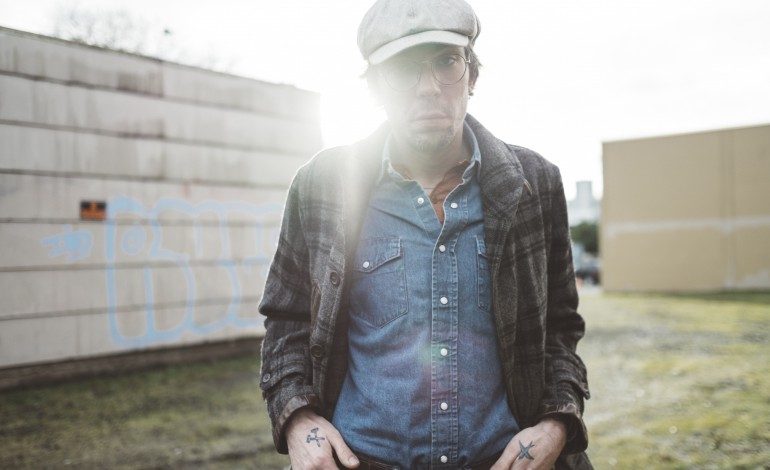

After spending some time away from Nashville and outside of his comfort zone, Justin Townes Earle is set to release his seventh album, Kids In The Street, on May 26th. It’s well-worn Americana with a modern edge and the occasional splash of vibraphone. Currently on tour with The Sadies, Earle took time to talk with us about Omaha, musical influences and the future of the genre.
mxdwn: Thank you for taking time to talk with me today, I know you’re on tour and you’re very busy. How has it been touring with the Sadies?
Justin Townes Earle: The tour’s been great so far. The Sadies and I have been discussing working together for a long time and, now that it’s able to come together, I couldn’t be happier with it.
mxdwn: Americana’s certainly more popular than it was ten years ago. In your opinion, is it possible for popularity and authenticity to coexist?
JTE: Yeah, it is. It just has to do with the more cooks you get in the kitchen, basically — the more diluted it’s gonna be, the more “oh, well I have an extra-special idea for an ingredient” kinda of stuff. Nobody’s done anything to make it more potent because, for everything good that’s added to it, there are fifty things that are watered down — just because you’ve got a banjo doesn’t make you Americana.
mxdwn: “Champagne Corolla,” the opening track, I find really fascinating. So much of Americana is concerned with a bygone lifestyle and this track is starkly modern in comparison. Lyrically, are you moving in a more modern direction?
JTE: Absolutely. I was taught very early by my father [country music legend Steve Earle] and a couple other songwriters to write about what you know and what you can get your hands on. I’ve got news for all these 20-somethings writing about girls in ’57 Chevys that they’ve never seen: it shows [Laughs].
mxdwn: They can’t relate to it.
JTE: Yeah, exactly. And that’s the thing. When I did Harlem River Blues, I started working for the MTA and wrote a song about a guy who works in a subway train. I just tried to make those experiences a little more modern to where they make sense to me and to the people around, because I, personally — I took a job one summer picking tobacco, but I never plowed a field. I worked tobacco for about a week and I said, “Fuck this,” and I went back to selling drugs [laughs]. I think everyone is always looking — whether they know it or not — for something that represents them and their place in time. I guess in some way that’s what I’m trying to do. I want to be like Woody Guthrie. When he wrote “Let’s Go Riding in My Car,” cars were a fairly modern thing. Not everyone owned a car back in those days so there was something very exciting about it. You just want to make sure you keep it exciting and current.
mxdwn: I was excited to see “Graceland” as a bonus track. Did that album, Graceland, influence Kids in the Street in any way?
JTE: Absolutely. When you break that song down, it reads like Mississippi John Hurt to me. When you take all the instrumentation out, it kind of sounds like this acoustic blues thing. And that song is so great; it makes sense now more than it ever has. It just has this feeling of uncontrollable change and compulsion. We don’t know why we’re doing things, but we have to do them sometimes.
mxdwn: For this album you worked with Mike Mogis. Was that your idea or someone else’s?
JTE: The record label wanted me to think about working with a producer. They brought me a list of probably 20 producers to look at. Mogis was one of the last ones that was actually brought to me and the one that made the most sense to me because he made Jenny Lewis’s Rabbit Fur Coat. It sounds incredible. His sensibility when it comes to recording instruments and his sensibility as a musician completely makes sense to me. I had to be convinced of the idea of using a producer, period.
mxdwn: Right, because you haven’t on your previous albums.
JTE: No, I mean, I’ve had a room full of friends. Getting outside of that comfort zone was definitely something I felt was gonna be very important at this point in my career. It was time to get outside of Nashville.
mxdwn: What was your favorite thing about recording in Omaha?
JTE: I was able to concentrate on the record the whole time. Recording in Nashville, we’d get done and I’d go hang out with the guys afterwards and we’d end up somewhere doing something — in Nashville, there were all these people stopping by the studio, things like that. In Omaha it was quiet. Mike has this nice little isolated studio with a band house connected to it. I don’t think I left the property. I was there for two weeks, I don’t think I left it more than once. I went to a drugstore once and a Jason’s Deli. It was just sitting and working on the songs. I didn’t go out with the guys for a drink at the end of the night because I wanted to hear what the mix was going to be an hour after we were done, because Mike didn’t go out — Mike’s an all-night kind of guy.
mxdwn: Do you have anything on the horizon for an upcoming project?
JTE: Yeah, well, doing this tour with The Sadies has got me thinking about writing a record specifically for this project. My mind’s kind of leaning towards writing a real serious honkey-tonk record — show all these so-called carpet-bagging country singers what it’s all about [laughs].
